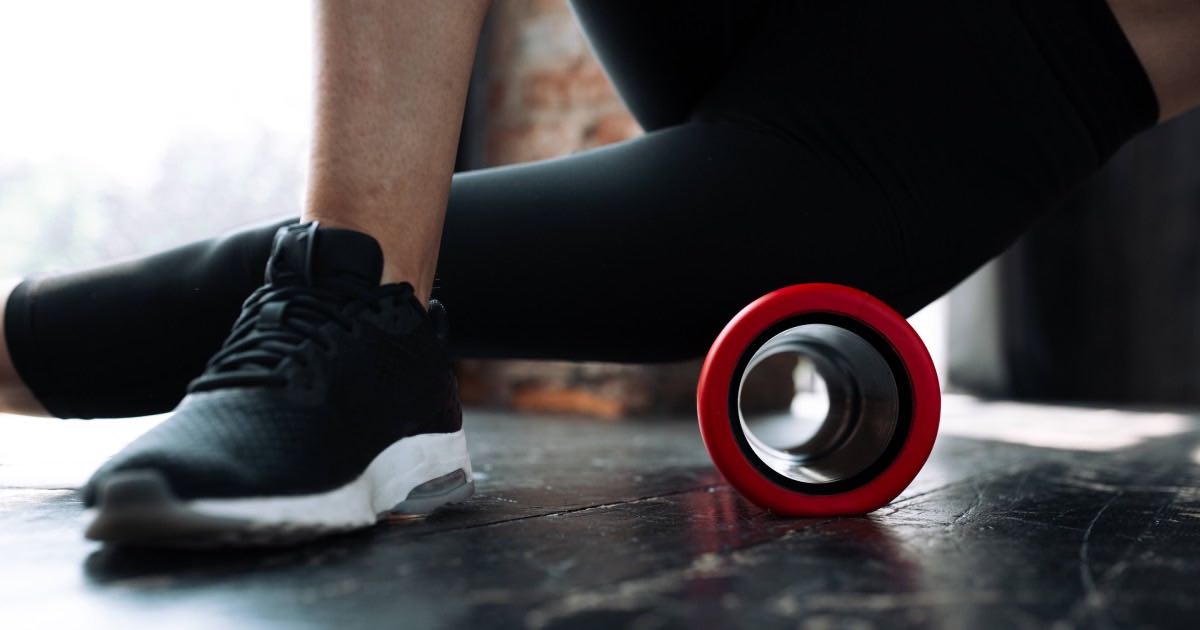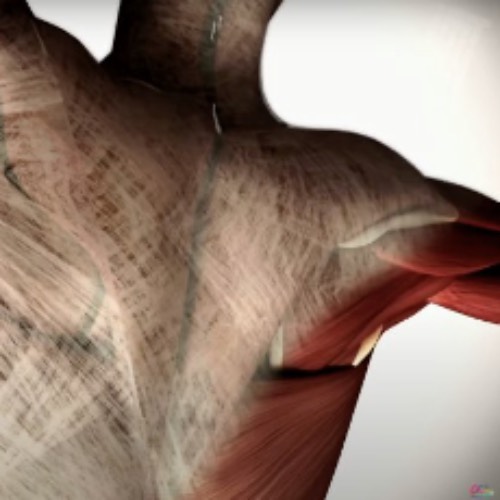Fascia Fitness | Where You Hurt Is Not Always Why You Hurt
- By Amber Jaworsky
- Published: Aug 8, 2022
- Last Updated: Feb 1, 2023

Physical Advantages of Fascia Training
When it comes to our health, the importance of fascia and connective tissue cannot be overstated. Most of all sports injuries occur in ligaments, joint capsules, tendons, and fascia, so learning about how to keep these tissues healthy can be a real game-changer.
Purposeful Fascia Training:
- Enables your muscles to work more efficiently
- Shortens recovery time after heavy exercise or competition
- Improves athletic performance
- Improves movement and coordination
- Creates resilient connective tissues
- Decreases inflammation
- Orchestrates pain-free everyday life
- Increases joint mobility
- Strengthens the body’s natural healing ability
- Corrects imbalances
- Increases circulation
- Releases muscular knots
- Supports detoxification


Fascia training enriches and boosts existing training programs by adding something essential that might be missing. Similar to how a multi-vitamin can bridge nutritional gaps, fascia training supplements every system of the body and keeps us moving like a well-oiled machine.
What is Fascia?


Fascia is the connective tissue that connects every part of your body. We’ve wrongfully thought that the skin is the body’s largest organ, but the fascia is the true winner. It’s been said that fascia is the “fabric of your life,” or your posture organ because it gives the body its shape and is layered over our entire frame, from head to toe, inside and out. Twenty pounds of your overall body weight is comprised of fascia, and it wraps:
- All 206 bones
- All 60,000 miles of blood vessels
- All 45 miles of nerves
- All 900 ligaments (tissue that connects bone to bone)
- All 4,000 tendons (tissue that connects muscle to bone)
- Every organ
- All 640 muscles, their individual muscle fibers, and their fascial sheaths
- All trillion cells in your body.
There are no empty spaces in our bodies. Everything is interconnected by fascia, and it’s one continuous structure that exists from start to finish, without interruption. Much like a yarn sweater that is constructed by a single string of yarn, if it gets snagged or tangled in one area, it will pull and bunch up in another area, distorting the shape and function. When this happens in the body it is known as a myofascial restriction. This pulling and bunching up of the fascia can exert up to 2,000 pounds of pressure per square inch on pain-sensitive structures (like arteries, nerves, veins, and lymphatic vessels). This leads to pain, poor sensory function and circulation, stiffness, swelling, and inflammation.
Comprised of collagen and water, fascia has been ignored by the medical community for the past 400 years because it does not appear on MRIs, X-Rays, CT scans, or other diagnostic images. As a result, many unnecessary surgeries and procedures are performed each year, many of which fail to fix the problem or alleviate the pain. New research is finding that the issue can often be found in the fascia tissue and that fascia training decreases pain and enables the body to realign and heal on its own.
What Does Fascia Do?
The role that fascia plays in health, well-being, and mobility is increasingly being recognized in the physiotherapy, sports science, and medicine fields. Researchers are learning more each day about how fascia transmits power within the muscles, communicates throughout the nervous system, and serves as a sensory organ.
On the simplest level, the fascia serves the body in four basic ways:
- Shaping: Fascia wraps, cushions, protects, supports, and gives structure to the body.
- Movement: Fascia transfers and stores power, maintains tension, and enables the body to move and stretch.
- Communication: Fascia sends and receives stimuli and information from the body to the brain.
- Supply: Healthy fascia aids in digestion and ensures that nutrients are dispersed efficiently throughout the body. It also provides cells and organs with food.
Let's Take A Closer Look
Your fascia holds four gallons of water and bodily fluid. Because it is liquid, the fascia serves as a conduit for electrical currents (energy) and provides a network for cellular communication to the brain. In his book, “Energy Medicine: The Scientific Basis,” James Oschmann explains that “the fascia is a semi-conducting communication network that can convey the bioelectrical signals between every part of the body. This communication network within the fascia is none other than the meridian system of Oriental Medicine.”
Fascia makes up 70% of your nervous system, and messages from a cell that are conducted through the fascia to the brain arrive three times faster than cellular messages that are sent through a nerve. These signals initiate all bodily movements through special sensors; if these sensors fail, the human body will lose its ability to control its movements. This continual loop of feedback between the sensory receptors and the nervous system is known as proprioception. Normal proprioception allows us to move without giving our movements a second thought, like running without looking at our feet or being able to touch our noses with our eyes closed. When the proprioceptive loop is interrupted or impaired (by injury or disease) even the simplest activities are hindered. Healthy fascia enables healthy proprioception and impacts every movement and every system in the body.


Features of Healthy Fascia
Healthy fascia:
- Stores and releases more kinetic energy (the conversion of chemical energy into energy of motion)
- Becomes stronger when it’s subjected to strain or load
- Develops more elastic resilience
- Heals faster and enables a quicker return from injury
Who Will Benefit the Most from Fascia Training?
Anyone who wants to live an active, pain-free life can benefit from fascia training. However, athletes and aging adults are two subgroups where fascia fitness is critical. In most athletes, fascial components are the weakest link, not their bones or muscle fibers. Pulled muscles rarely occur in the muscle fibers themselves, but occur most often in the fascial extensions around the muscles. Specific fascia training strengthens and regenerates fascial components thus preventing injuries and enabling the body to recover from injuries quicker. A healthy athlete equals a happy athlete, and that can be said of the general population too.
What Happens if I Don’t Take Care of My Fascia?
Fascia tissue degenerates if it is not exercised. The old “use it or lose it” adage applies to fascia, and recent research shows that the fascia becomes acutely matted and clotted as we age or after periods of immobility. This matting affects the functioning of muscles and decreases overall coordination. Once bound by tangled fascia, muscle fiber bundles are unable to properly slide against each other. The ability to transmit power from muscle to muscle no longer works smoothly, and the flow of movement is hindered. When this happens, more energy is required for basic movements. Posture also suffers and stiffness will be felt because matted tissue is less elastic.
Tight fascia also affects our joints and prohibits mobility. If left unaddressed, our bodies adapt to the chronic holding patterns we experience. This creates imbalance and uneven loading in the body. We see this a lot in cycling due to its repetitive movement sequence. The calves, thighs, and hips are activated more than any other muscle group when we cycle. The knee and hip joints work within a very small radius (and in one direction only), which elongates the fascia track of the backline of the body, shortens the hamstrings, contracts the chest, and leads to decreased hip and knee mobility.
Cyclists can compensate for this by adding fascia training and countermovement stretching to their workouts.


How Do I Take Care of My Fascia?
Less is more when it comes to exercising the fascia. Fascia training is not the same as muscular training. The essential elements that fascia needs for rebuilding, regeneration, and fluid exchange are:
- Rolling / myofascial release
- Exercise, especially flexibility and strength training
- Lots of hydration
Myofascial Release:
Regular rolling revives and maintains the fascia. When we roll, mechanical pressure and shear motion are applied to the fascia, and this leads to a liquid exchange in the connective tissue. The tissue is literally squeezed like a sponge, transporting cellular waste and lymph away, and then refilling with new and fresh water from the blood plasma in the small capillaries. This exchange stimulates the metabolism and improves fluid supply throughout the entire body.
Fascia loves pressure (myofascial release). When pressure is applied to the fascia, it triggers a cascade of signals throughout the nervous system and muscles. Pain and inflammation are reduced, muscle tightness dissipates, and knots and adhesions are released. This is how the tissues in the body rejuvenate and how joint mobility is regained.
Exercise:
When we sit all day or live a sedentary lifestyle cellular waste and lymph collects within our tissues. This causes acute and chronic inflammation as well as pain and disease. Dynamic and consistent exercise is a powerful way to counteract and alleviate this problem. It is also a vital way to keep our fascia healthy. The fascia is responsive to movement- it gets stronger through a combination of stretching and muscular contraction, so a multi-faceted approach to exercise serves us best.
Most of us tend to gravitate toward one of three types of activities:
- Flexibility & Restorative Training
- Strength & Resistance Training
- Cardiovascular Training
The thing we like the most, we do the most, which often leads to an imbalance in our bodies. We need a healthy dose of all three types of training, especially as we age to balance, strengthen and restore the body. Vary the type and the intensity of your movements, and move frequently throughout your day- your fascia, and your overall health, will thrive.
Hydration:
Our entire metabolism requires water, but it is particularly important for our connective tissue. The fascia consists of almost 70% water and it needs a daily supply of plain water to do its best work. So coffee, teas, juices, and soft drinks do not contribute to the 1 to 1.5 liters of water we should be drinking each day.
Fascia is springy and resilient when it is properly hydrated, which allows muscles, joints, organs, and all the body’s systems to function properly. The degree of fascia fluidity depends upon how flushed and clean the fascia is. Just like a sponge, fascia can dry up and become brittle and hard if it is not hydrated. Fascia holds on to harmful toxins if it’s not hydrated, and sticky, sludge-like fascia fluid is acidic and toxic and can quickly become a migration point for cancer cells.
Other Things to Consider:
Inflammation, stress, nutritional deficits, smoking, and an inflammatory diet (sugar, dairy, processed foods, etc) are also big contributors to the overall health of the body and its tissues. Doing your best to live a well-rounded healthy lifestyle makes a difference in big and small ways.
Try to remember:
References:
Robert Schleip, Fascial Fitness
David Lesondak, Fascia: What it is and why it matters
Anthony Chrisco, Self-Myofascial Release for Professionals
Purslow Fasciacongress 2009
James Oschman, Energy Medicine: The Scientific Basis
Ida P. Rolf, Rolfing
Schleip, R. Zorn, A. Else MJ, Klinger W., The European Fascia Research Project, 2006

















